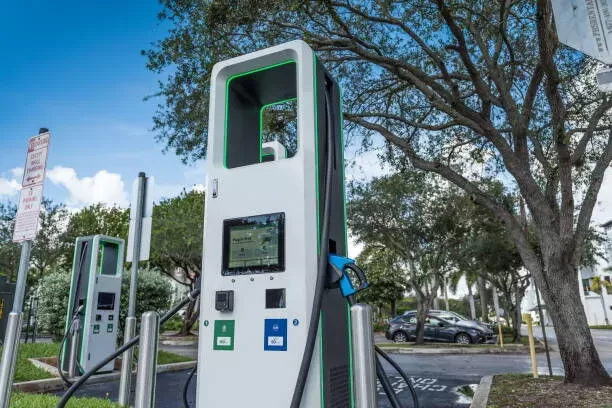Notifications

5 minutes, 30 seconds
-24 Views 0 Comments 0 Likes 0 Reviews

Introduction
The accelerating shift toward electric vehicles (EVs) is transforming the transportation sector, driving the urgent need for fast, efficient charging infrastructure. Among the charging options, DC fast chargers—or Level 3 chargers—are essential for reducing charging time and enabling seamless long-distance travel. Unlike Level 1 and Level 2 chargers, which are ideal for home or workplace use, DC fast chargers dramatically cut charging time, providing up to 80% charge in just 20–30 minutes.
Strategically placing these chargers is vital for maximizing their utility, improving accessibility, and supporting EV adoption. This article explores the types of EV chargers, the role of DC fast chargers, and the key considerations for their optimal placement.
DC fast chargers convert AC from the grid into DC and deliver it directly to an EV's battery, bypassing the vehicle's onboard charger. With power ratings typically ranging from 50kW to 350kW, they are designed for high-speed public charging, especially along highways, in urban centers, and other high-traffic zones. Their rapid charging capability makes them crucial for reducing range anxiety and enhancing EV convenience.
Level 1 Chargers
Use a standard 120V outlet.
Provide 2–5 miles of range per hour.
Suitable for overnight home charging.
Level 2 Chargers
Operate on 240V.
Deliver 10–60 miles of range per hour.
Common in homes, workplaces, and public destinations.
DC Fast Chargers
Deliver direct current at 400V–800V or more.
Add up to 80% battery capacity in 20–30 minutes.
Ideal for public charging along highways and in commercial zones.
Even the most advanced charger is ineffective without the right location. Poor placement can result in underutilized infrastructure and wasted investment. Well-sited chargers increase visibility, accessibility, and user satisfaction while supporting local grid capacity and business development.
High-Traffic Corridors
Highways, rest areas, and major roads are ideal for enabling long-distance EV travel.
Co-locating with fuel stations and diners improves user convenience.
Commercial and Retail Centers
Malls, supermarkets, and entertainment venues attract consistent traffic.
Charging time aligns with shopping or dining visits, creating business synergy.
Residential and Multi-Unit Housing
Urban residents without private chargers benefit from nearby fast-charging access.
Developers are increasingly integrating chargers into building infrastructure.
Public Transit Hubs
Airports, train stations, and bus terminals offer high utilization rates.
Support for EV fleets and ride-share services boosts operational efficiency.
Workplaces
Daytime charging during work hours encourages EV use.
Challenges include limited public access and risk of overuse by employees.
Best practice: combine Level 1, Level 2, and smart load management systems.
Accessibility
Clear signage, lighting, and ADA compliance enhance user experience and safety.
Power Availability
Locations must support high-voltage infrastructure and ideally require minimal electrical upgrades.
Grid Capacity
Grid impact assessments and supplementary solutions like battery storage or renewable integration may be necessary.
Regulatory Compliance
Installations must adhere to local codes, fire safety standards, and permit requirements.
Electrical Design
Proper cable management, voltage considerations, and load balancing require experienced contractors for safe, efficient deployment.
Boosted EV Adoption: Accessible fast charging reduces range anxiety and promotes EV usage.
Revenue Generation: Chargers in commercial hubs can drive additional income and foot traffic.
Environmental Impact: More EVs on the road contribute to emissions reduction and cleaner cities.
Enhanced Driver Experience: Fewer delays, improved access, and seamless travel all contribute to driver satisfaction.
DC fast chargers are essential to the future of electric mobility—but their impact depends heavily on where they are placed. High-traffic routes, commercial zones, residential areas, and transit hubs offer the greatest potential for utilization and impact. By considering power requirements, accessibility, grid capacity, and compliance, stakeholders can make informed decisions that accelerate EV adoption and promote sustainable urban development.
As EV infrastructure continues to evolve, strategic planning and smart deployment of DC fast chargers will be key to building a connected, low-carbon transportation future.Know more about Google SEO Directory
China EV Chargers EV Charger Manufacturer EV Charging Solutions

